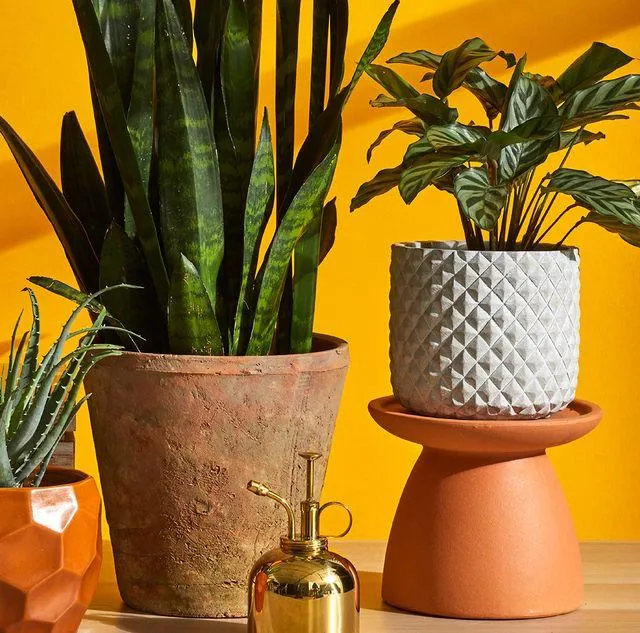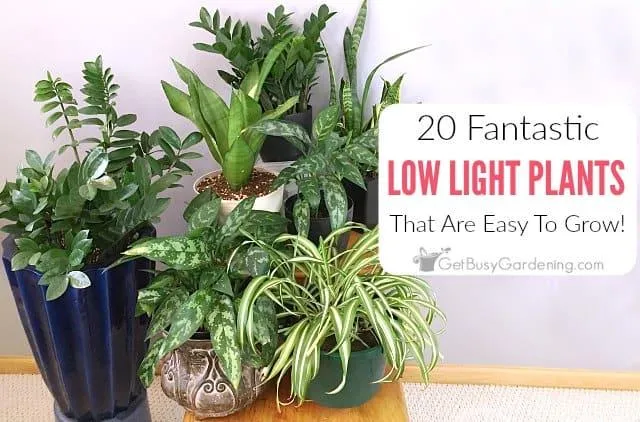Houseplants That Thrive Without Sunlight
If you live in an apartment or home with little to no natural light, you may worry that you can’t keep houseplants. But fear not – there are actually many beautiful plants that do just fine in low-light conditions. In this article, I’ll cover over a dozen great options for low-light plant parents, along with care tips to help them thrive without sunlight.
Snake Plant (Sansevieria trifasciata)
The snake plant is one of the toughest and most forgiving houseplants you can own. From my experience owning several snake plants over the years, these plants can go weeks without water and still bounce back. Their stiff, upright leaves come in varied colors like solid green, yellow-striped, or white-streaked. Snake plants release oxygen at night, so they’re perfect for placing in a bedroom. Just give them bright indirect light and neglect them – they’ll reward you with years of carefree growth.
Chinese Evergreens (Aglaonema species)
Chinese evergreens come in an array of colors from solid green to colorful variegated varieties splashed with shades of pink, cream, and silver. They make lovely accent plants and thrive in low to medium light. I keep mine about 5 feet from an east-facing window, where they receive morning sun filtered through sheer curtains. Water when the top inch of soil is dry, and fertilize monthly in spring and summer. Chinese evergreens are very tolerant of low light and make a great pick for low-maintenance plant parents.
Pothos (Epipremnum aureum)
The ubiquitous pothos vine is the perfect choice for anyone new to indoor plants. Pothos are as tough as they come – I’ve seen these plants survive in offices with artificial light alone! They do well in light from a nearby window or under fluorescent lighting. Let the soil dry out between waterings. You can prune leggy vines to encourage bushier growth. Over time, pothos will trail beautifully, adding vibrant green to your home. Their tolerance and easy care make pothos a top choice for low-light conditions.
Peace Lilies (Spathiphyllum)
With their beautiful white blooms and broad, glossy leaves, peace lilies elevate any room. They thrive in low or medium light and emit a pleasant fragrance to boot. I’ve kind of put mine to the test by letting it go a bit longer between waterings than recommended – and it’s still kicking! Just make sure the soil doesn’t dry out completely. Fertilize monthly in spring and summer for continued flowering. Peace lilies add beauty without a lot of fuss or sunlight needed.

Cast Iron Plant (Aspidistra elatior)
Talk about a plant that lives up to its name – the cast iron plant is nearly unkillable. From my experience, it tolerates low light, drought, cold drafts – you name it. Its thin, arching leaves give an airy, tropical vibe. Let the soil dry slightly between waterings. I’ve kept mine for years with no problem in medium light 5-6 feet from a north-facing window. It’s a great choice if you’re new to houseplants or simply want something ultra-low maintenance without sun.
ZZ Plant (Zamioculcas zamiifolia)
The ZZ plant boasts thick, waxy stems and leaves that come in varying shades of bright or dark green. Its legendary toughness has earned it nicknames like the “zombie plant.” I find it thrives in medium to low light and is very forgiving of neglect. Water only when the top inch of soil is dry. Its dark, glossy leaves add drama to any room. When treated well, ZZ plants often reward owners with new growth. It’s one of the best low-light plants around for reliability and low care.
Spider Plant (Chlorophytum comosum)
Spider plants are lightweight and airy with narrow, grass-like leaves and dangling “baby spiders” that can be removed and propagated as new plants. They adapt well to various light conditions from bright to low light. You can’t really mess up caring for a spider plant – simply water when the soil is dry and give it average indoor temperatures. It’s kinda fun watching the spiderettes form over time! Spider plants brighten up any space without sun and earn their keep by purifying the air.
English Ivy (Hedera helix)
For a trailing groundcover or hanging plant, English ivy thrives with very little light. This woody-stemmed evergreen vine will cascade gracefully over any surface given support. From my experience, it grows well in east, west, or north-facing windows and even under fluorescent lighting. While it can survive long dry spells, it rebounds with lush growth when watered periodically. I keep mine in low light 5+ feet from a window and it’s grown over 2 feet long! Ivy adds lush greenery wherever it’s placed.
Janet Craig Dracaena (Dracaena deremensis ‘Janet Craig’)
With its thin, upright canes of slender leaves striped in cream and green, Janet Craig dracaena offers a graceful, tropical look. It happily gets by in medium to low light, perhaps a few feet back from an east or west window. Let the soil dry out a bit between waterings. Over time, it may develop reddish new growth for added visual interest. Dracaenas filter toxins and release oxygen, so they’re excellent for any indoor space. This variety adds beauty with minimal light or maintenance needs.

Chinese Money Plant (Pilea peperomioides)
Also called the pancake plant, this unique foliar plant has flat, smooth-edged leaves that resemble coins stacked nicely. It grows well in medium to low light and bounces back from the occasional dry spell. A friend gave me a small cutting that’s grown into a full plant! The Chinese money plant thrives with infrequent water and looks amazing cascading from a hanging pot. It’s a great low-light option that brings lively texture and color.
Dieffenbachia (Dieffenbachia)
With their dark green leaves splashed or striped in creamy white or yellow, dieffenbachias impart an air of the tropics. They fare well in medium to low indoor light between 4-8 feet from a window. Water only when the soil begins to dry. Their tolerance and architectural beauty make dieffenbachias a top pick for persons with little natural light. They lend drama without demanding sun.
Potted Herbs
Surprisingly, many popular culinary herbs thrive with minimal light requirements. Some great low-light herb options to try include parsley, chives, thyme, oregano, mint, and lavender. These add function alongside their form in any kitchen windowsill. Many herbs originated spreading freely in partial shade of forests and meadows. From my experience, herbs liven up cooking while not breaking the bank on grow lights or supplies.
African Violets (Saintpaulia ionantha)
- Roots don’t like to sit in water, so water from the bottom by setting the pot in a saucer of water until the top inch of soil is moist.
- Fertilize monthly during spring and summer with a formulation for blooming houseplants.
- African violets thrive in medium light and prefer temperatures between 65-75°F.
- Deadhead spent flowers to encourage reblooming. Propagate leaves to start new plants!
With their cute rosettes of heart-shaped leaves and colorful blossoms, African violets add a sweet pop of color. From what I’ve read, they adapt well to artificial light indoors and make excellent low-light plants. Their preferred growing conditions are simple to replicate at home.
In conclusion, there are many beautiful houseplants that thrive in low-light environments, allowing anyone to enjoy live green décor regardless of window access. Kind of experiment to see which varieties suit your conditions best. With just a few of the super-tolerant options covered above – like pothos, snake plant or zz plant – you can add life and oxygen to any interior. So don’t stress if you lack sunlight – with the right picks, you too can be a plant parent without all that pesky sun!

No-Sunlight Houseplants
| Plant Name | Light Requirement | Watering Needs | Size |
|---|---|---|---|
| Snake Plant | Low to No Light | Let soil dry between waterings | Up to 3 feet tall |
| Pothos | Low to No Light | Water when top inch of soil is dry | Trailing vines up to 10 feet |
| Chinese Evergreens | Low to Medium Light | Water when top inch of soil is dry | Up to 2 feet tall and wide |
| Peace Lily | Low to Medium Light | Water when top inch of soil is dry | Up to 2 feet tall |
| Philodendron | Low to Medium Light | Water when top inch of soil is dry | Trailing vines up to 10 feet |
FAQ
-
What types of plants can grow without any sunlight?
Basically, there are a few different plant varieties that can survive and even thrive without direct sunlight. Some common choices include snake plants, pothos, Chinese evergreen, arrowhead plant, and peace lilies. These plants are able to photosynthesize using lower or indirect light levels.
-
How can plants grow without using photosynthesis?
Kind of amazing, but some plants have found a way to get nutrients without relying on photosynthesis. Certain types of fungi form partnerships with plant roots called mycorrhizae. In these mutually beneficial relationships, the fungus breaks down nutrients from the soil that the plant absorbs. At the same time, the plant provides carbohydrates to the fungus. So they basically help each other out!
-
Won’t low-light plants get leggy without enough sun?
It’s possible, but many “low-light” plants have adapted to thrive in less-than-optimal lighting. As long as they receive at least some indirect sunlight, most will stay reasonably compact. You can also help prevent legginess by making sure to rotate plants regularly to encourage even growth. Another thing you could try is supplementing with a grow light during the darker months.
-
What are some foolproof indoor plants for low light?
If you want plants that are virtually impossible to kill, some classics include the ZZ plant, snake plant, and pothos. These plants can go quite a while between waterings and don’t demand much light at all. The spider plant is another great one – its bold leaves and ability to produce plantlets (baby plants) make it very forgiving. On the other hand, peace lilies or Parlour Palms require a bit more light and fuss but also add beauty to a space.
-
How can you tell if a plant really needs more sunlight?
There are a few signs that might indicate a low-light plant needs brighter conditions. Leaves may start looking yellowish or drop prematurely. Stems could get spindly or less sturdy. Overall growth may seem painfully slow. Nevertheless, plants are pretty resilient – it’s not the end of the world if an indoor plant stretches a bit while searching for light. With some adjustments to lighting and care, the plant will usually bounce back.

Why do some plants thrive in deep shade while others struggle?
Plant adaptation is pretty amazing – different species have developed diverse strategies for acquiring resources in varying light levels. A factor that helps determine a plant’s low-light tolerance is chlorophyll content. Some plants produce more of this light-absorbing pigment, allowing them to photosynthesize effectively with less sunlight. Leaf thickness and waxiness also play a role in minimizing moisture loss. Overall, evolution has enabled certain varieties to basically thrive where others could hardly survive.
Are any houseplants toxic to pets?
While many common houseplants are non-toxic, some stronger plants that prefer less sun may be poisonous if ingested by cats or dogs. An especially problematic one is the beautiful yet deceivingly dangerous dumb cane or Dieffenbachia genus. Perhaps talk to your vet about plant safety – is it worth the risk? Safer low-light options abound that won’t harm curious pets. Always do your research to avoid distressing accidents.
